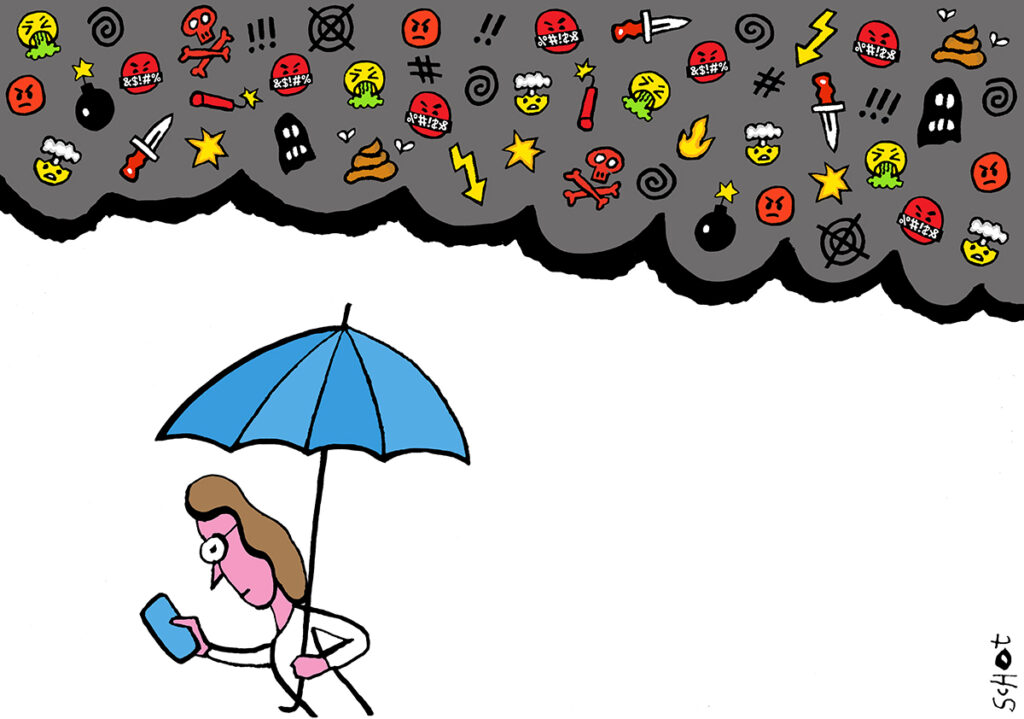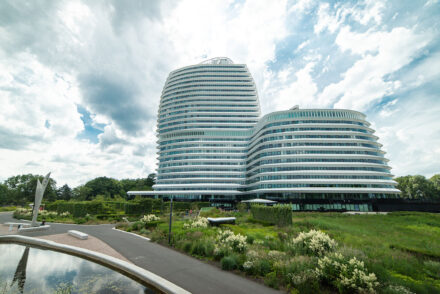How do academics deal with online hate? ‘I won’t stop publishing’
Hate mail, threats of lawsuits and even violence. Academics are more often confronted with unsafe reactions on social media. The university is keen to help and offers, among other things, guidelines to cope with the flood of negative reactions, but how do scientists themselves experience such a media storm?

‘As far as I am concerned, all cats can go outside whenever they want, as long as we lock up these kinds of insane pseudoscientists who make up this nonsense somewhere inside,’ Geert Wilders wrote on Twitter at the end of 2019. He did this in response to a publication that Professor of Nature Conservation Law Arie Trouwborst and Professor of European Law Han Somsen published around that time about domestic cats and European nature conservation law.
Trouwborst and Somsen argued that stray domestic cats pose a major threat to the bird population in our country, and that the deliberate release of cats is a violation of European nature conservation law. Wilders’ reaction was still relatively mild but possibly inspired anonymous keyboard knights who posted texts such as: ‘It could end badly’ to ‘Whoever kills a cat deserves to die.’
Directives
The university wants to support scientists with the guide Threat to scientists in the (social) media. It contains guidelines for scientists and managers who must deal with unsafe behavior in the public debate. In addition, there is the national website ‘Science Safe’ with information and also a hotline for incidents of transgressive behavior.
The university’s guidelines also state, among other things: Stay honest, careful, transparent, independent, and responsible. The handles feel a bit like an open door. But they are intended as general indications because many cases are self-contained and require customization.
Herring test
Environmental economist Ben Vollaard knows all about it. He made the news in 2017 by making well-founded criticism of the famous herring test of the national newspaper Algemeen Dagblad (AD). In this test the newspaper compared and ranked hundreds of outlets of herring nationwide. The newspaper filed a complaint with the Scientific Integrity Committee of this university, but the complaint was declared unfounded. In the end, AD scrapped the oliebollen test and fries test in addition to the herring test.
In addition to a lot of support, Vollaard also received criticism, especially from the side of the AD. Trouwborst and Vollaard say it did not affect them: ‘It does not bother me. I let it pass by me completely. You just must be able to manage that,’ says Vollaard.
Social media sometimes also help your research, Vollaard thinks. ‘Although it was quit a storm, almost all the messages on social media about his criticism on the herring test were positive. We love having the wind in our sails.’ Vollaard got that push in the back from online juice channels like GeenStijl, among others: ‘But those positive reports were just as unsubtle as negative reports can be,’ he acknowledges.
Let it rage
One thing the scientists have learned is that they give a media storm as little attention as possible, because after a week or two the fuss is usually over. Still, the reactions have an impact, Vollaard acknowledges: ‘We are not made of stone and over the years I have started to cover myself more, for example by never publishing anything without a co-author.’
But that does not stop them from disseminating their research. In recent years, Vollaard has been in the news with evidence of large-scale fraud by North Sea fishermen and Trouwborst because of the wolf debate. And there too, the anonymous reactions were not unheard of. ‘The only thing you can do is use your common sense,’ Trouwborst thinks.
Self-censorship?
The perseverance of Trouwborst and Vollaard is commendable. The strong reactions on social media could encourage a form of self-censorship, which tends to erode the academic freedom. Trouwborst: ‘Of course you can try to avoid the risk by evade certain topics or media, but that is not the path I choose. I am not going to stop publishing or talking about cats or wolves.’
It is good to set out a media strategy in advance, Vollaard believes. ‘Think about the way you present the research. The communication department can play a key role in this,’ he says. ‘Which headline do you choose for a press release, for example, because that can have an amazing impact.’
Support
In addition, the university can make a compelling case by protecting their employees, say both researchers. Because in recent years they have felt very supported in their fight against troublemakers in the media. Both Vollaard and Trouwborst have experienced this as very positive.
‘When those serious threats came in, I contacted the people in the university’s communications department,’ Trouwborst recalls. ‘They immediately informed the university’s security. I was glad that they took this seriously, were concerned and that they took the necessary action.’
Custom
Trouwborst: ‘My experience was that concrete customization was delivered. After that, they asked a few more times how I was doing and if I needed anything. That was all very professional and pleasant.’
Vollaard is also very happy with the legal help he received: ‘Behind the scenes, the AD tried to tackle me. I now know that the university really supports me when a complaint is filed. They even arrange a lawyer, who is then paid in full. You really need them. I had very positive experiences with that during the herring test.’







